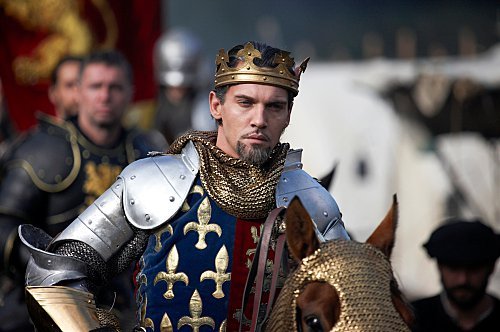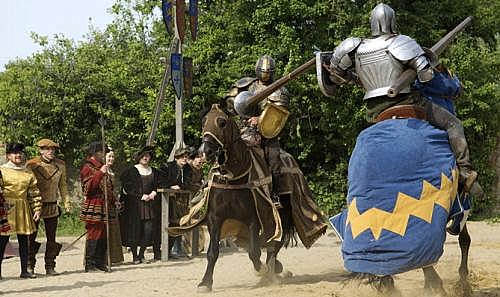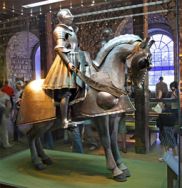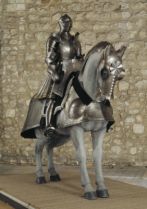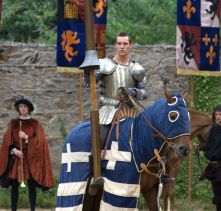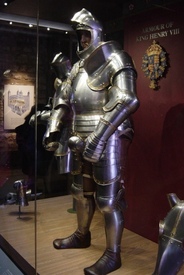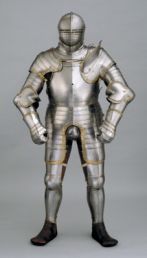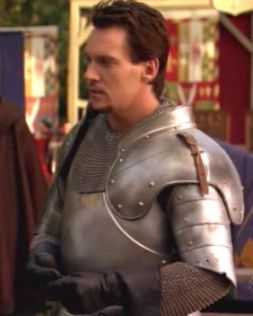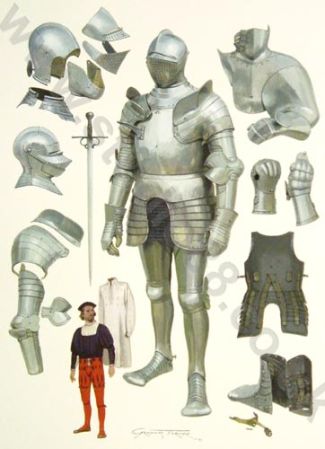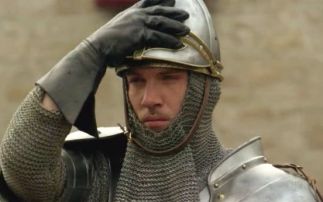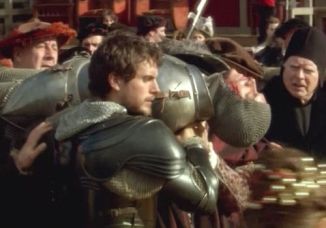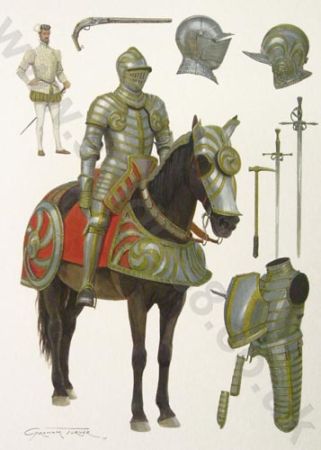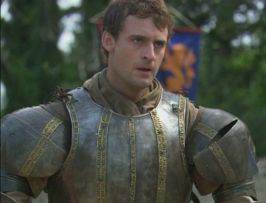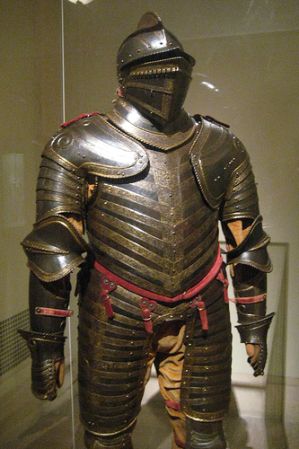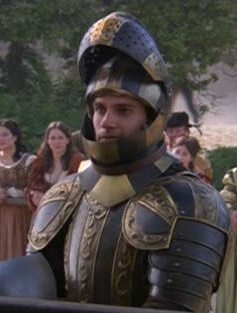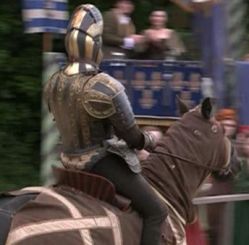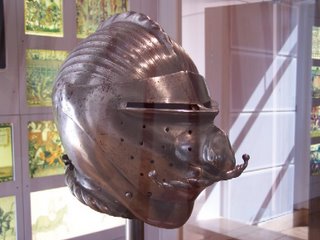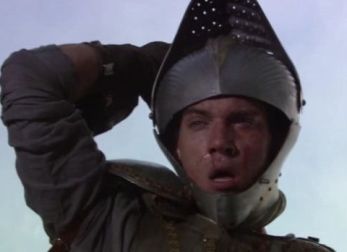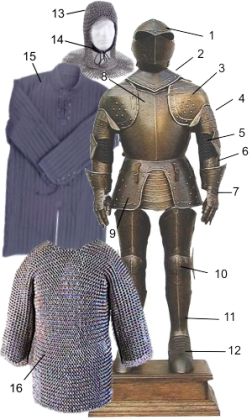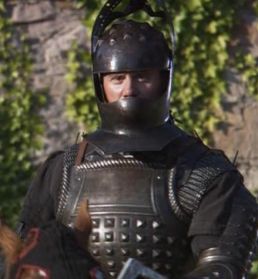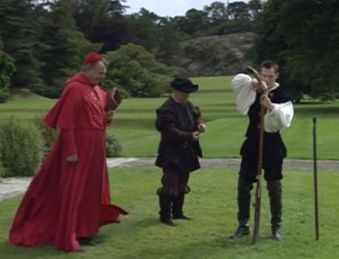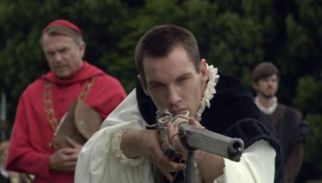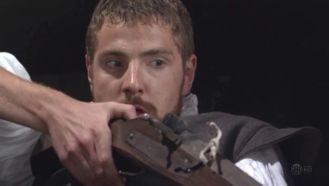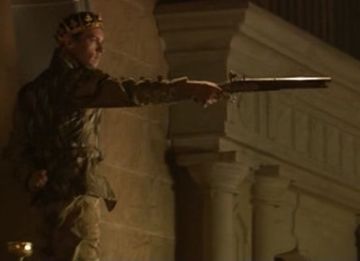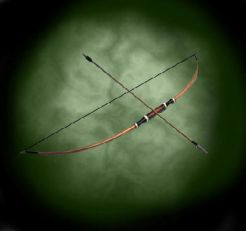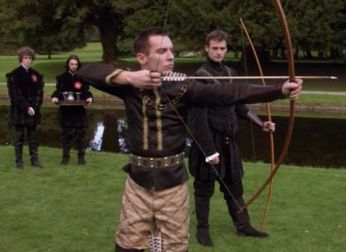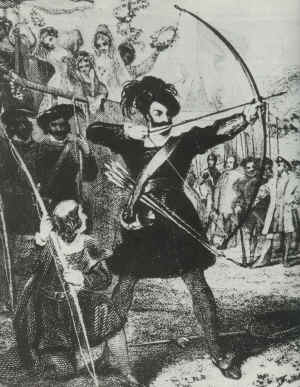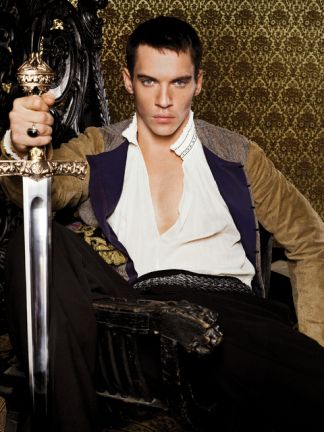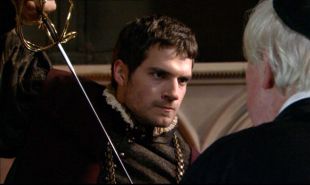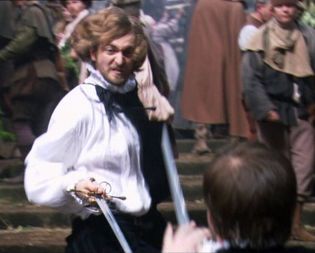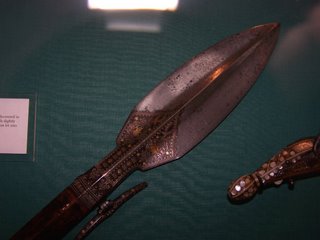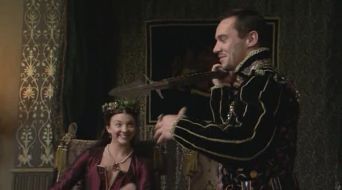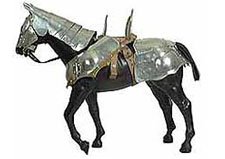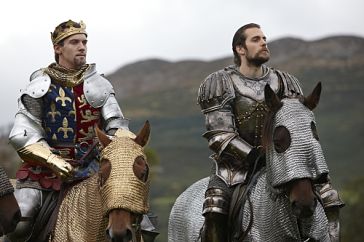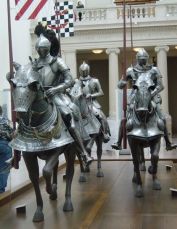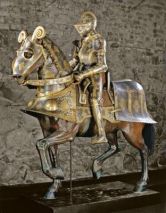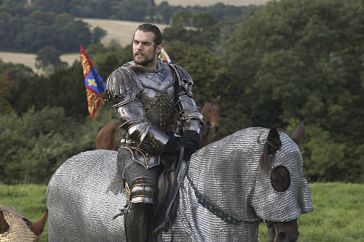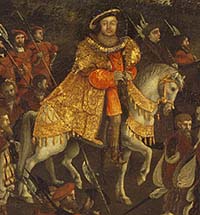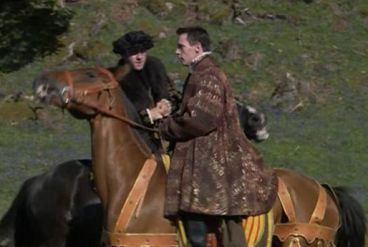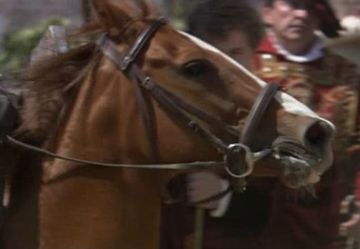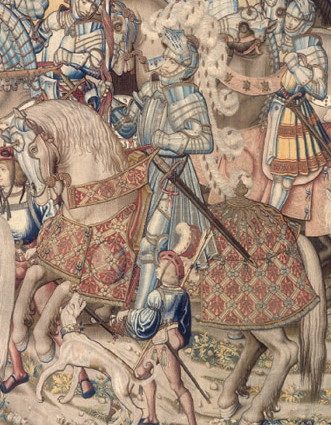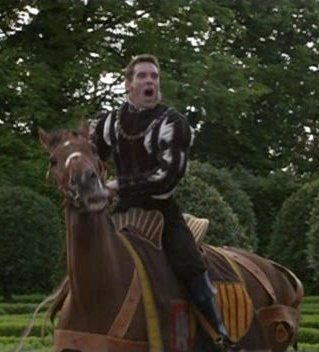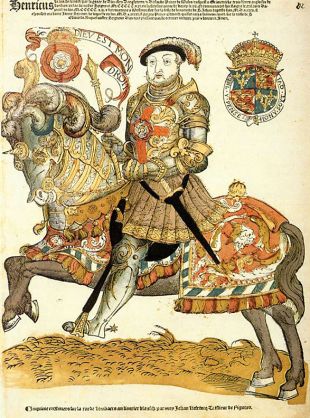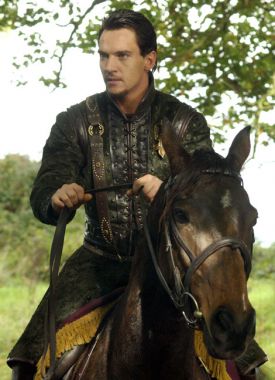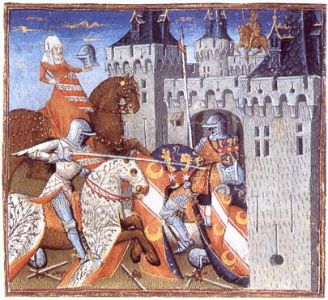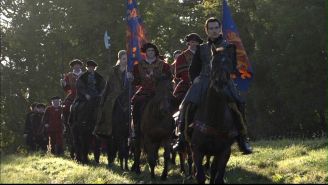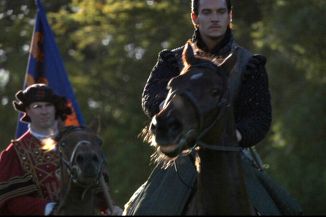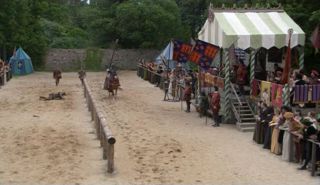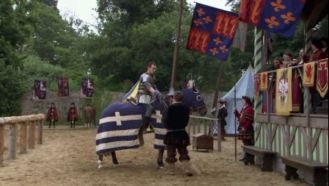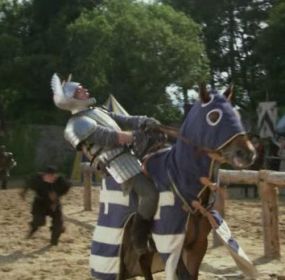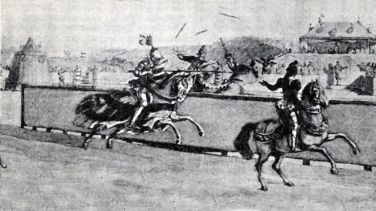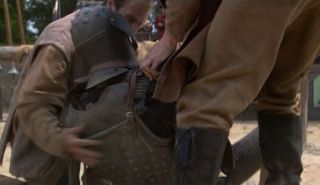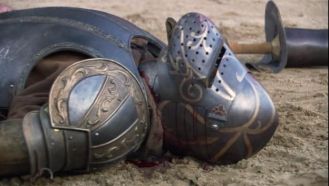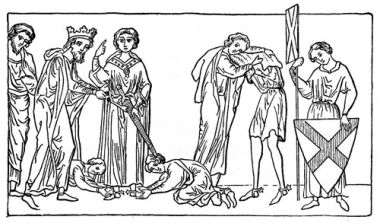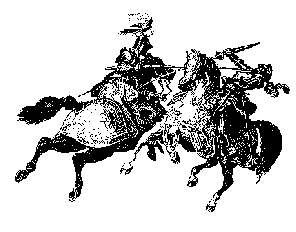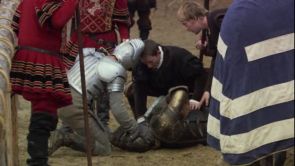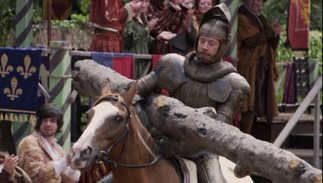ARMOUR & Weapons of The Tudors
Jump to navigation
Jump to search
Guns
Jousts & Tournaments
| Armour & Weapons of the Tudors Click EasyEdit to add to this page! (Don't see the EasyEdit button above? <a href="/#signin" target="_self">Sign in</a> or <a href="/accountnew" target="_self">Sign up</a>.) The format is Historical info on the left and pics of the Series on the right |
| When asked what the biggest challenges for season 4 were, Jane Bergin, The Tudors costumes designer said : "Well this was really a heavy year, because there’s nothing as heavy on costumes as battle. That was huge and we made most of the armour and the military clothes in the workshop too. There’s a surprising amount of research material available and we did everything quite authentically. One of the problems with armour that I was trying to avoid was to have the soldiers look too generic on horseback, so I really worked very hard with Liam Rodden who is our head tailor and the influence I took was the Japanese warlords to make people gasp when they saw the King. His costume is extraordinary – like something from a Kurosawa film. Then for the big battle scene we discovered someone in the UK who had Laurence Olivier’s original Henry V tabard (coat of arms) and that’s what our Henry rides into battle with. So there’s this connection with that great actor and film." |
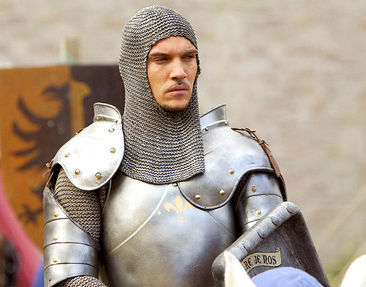 King Henry VIII founded the royal armour workshop at Greenwich Palace in 1515 & top rank craftsmen were brought in from Germany to Greenwich. Average annual pay was approx 10 pounds and a suit of armour was worth 300 pounds. There was also a law that a man had to earn more than 100 pounds to own a gun or crossbow |
| LINKS:
|
Armour, Shields & Helmets
| Historical | Series |
| Henry VIII's armour in his early years | |
| Henry in later years | |
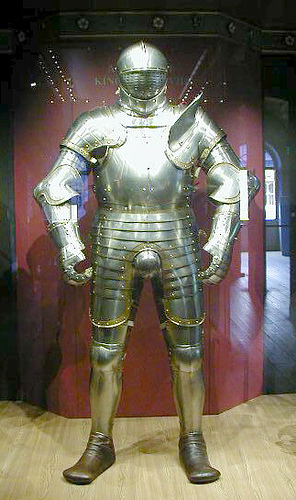 | 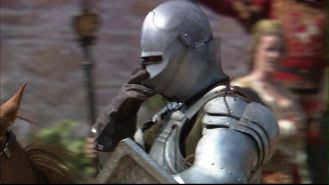 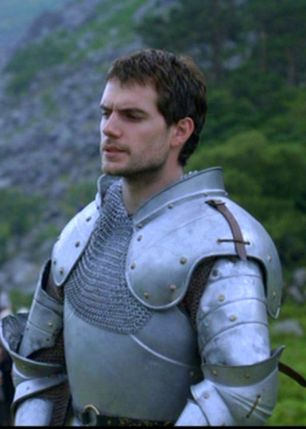 |
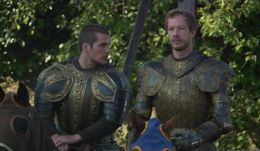 Kris Holden-Reid (Compton) said the jousting scenes were fun, "besides the armour that was made for the series was aluminum, not very heavy at all" | |
| at the Metropolitan Museum of Art in NYC | |
| | Edward Stafford, 3rd Duke of Buckinghamin armour which is more medievalin its look as befits his character of being the leader of the conservative nobles. |
| Names of the components of a suit of armour: 1.Helm (Helmet) 2.Gorget 3.Pauldrons 4.Spaulders 5. Chainmaille(Gussets) 6.Vambrace 7.Gauntlets 8.Breastplate 9.Faulds (Tassets) 10.Kneecup 11.Greaves 12.Sabatons (Solorets) 13.Coif 14.Arming Cap 15.Gambeson 16.Haubergeon (Hauberk) [source: reliks.com] | 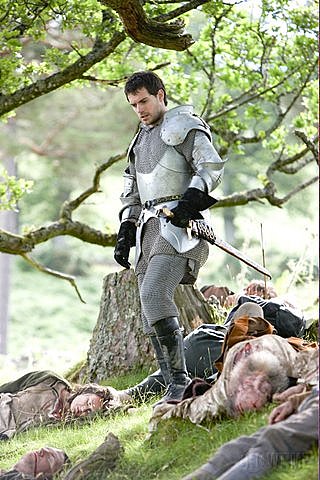 |
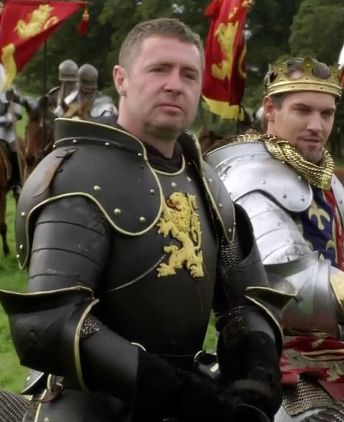 | 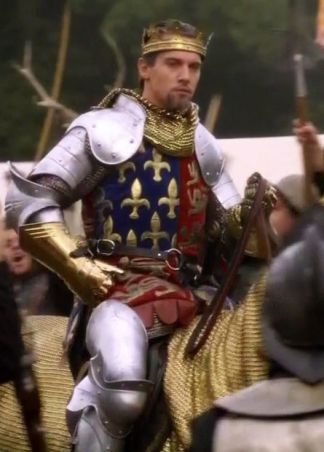 |
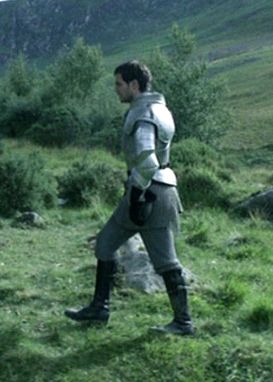 | 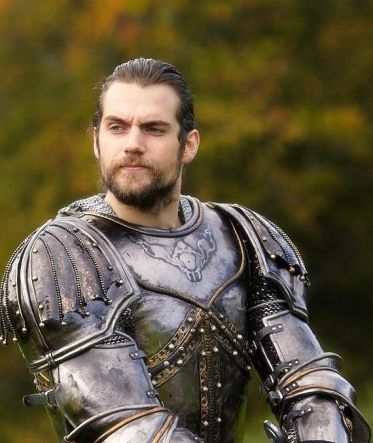 |
| <embed flashvars="transition=Fade&site=http://tudorswiki.sho.com&imageServer=http://image.wikifoundry.com&albumId=62749" height="532" src="http://widget.wetpaintserv.us/wiki/thetudorswiki/page/The+Tudors+Armory/widget/unknown/94985e08087908ed7cd93781e689366fc51fadec" type="application/x-shockwave-flash" width="532" wmode="transparent"/> |
| Weapons |
| "Henry...collected weapons; he owned 94 swords, 36 daggers, 15 rapiers, 12 woodknives, 7 crossbows and 100 breech loading arquebuses. Only one arquebus [matchlock gun] survives in the Royal Armouries; it bears his monogram and the date 1537. Henry's wooden lance, painted red,gold and black with motifs of leaves and latticework, is also in the Tower , as is a dagger etched with roses and pomegranates, which probably belonged to him. His crossbow, bearing the royal arms and dating from around 1527, is in Glasgow Art Gallery and Museum while his sword and scabbard are in the Royal Collection at Windsor" ~ Alison Weir's Henry VIII and his court |
| Historical | Series |
| Matchlock: The matchlock, also called the musket, the arquebus, and various other names, was invented in the 15th century.The musket was about five to six feet long, and weighed about twenty pounds. When fired, the musket was supported by a forked stick. 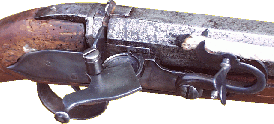 The first dated illustration of a matchlock mechanism dates to 1475, and by the 1500s they were universally used. Despite the appearance of more advanced ignition systems such as that of the wheellock and the snaphance, the low cost of production, simplicity, and high availability of the matchlock kept it in use in European armies until about 1720. It was eventually completely replaced by the flintlock as the foot soldier's main armament. The first dated illustration of a matchlock mechanism dates to 1475, and by the 1500s they were universally used. Despite the appearance of more advanced ignition systems such as that of the wheellock and the snaphance, the low cost of production, simplicity, and high availability of the matchlock kept it in use in European armies until about 1720. It was eventually completely replaced by the flintlock as the foot soldier's main armament. | |
| Wheel lock: 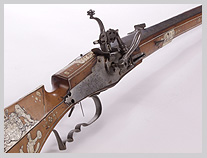 The firing mechanism of the wheel-lock gun worked on the same principle as a cigarette lighter. A metal wheel rubbed against a piece of iron pyrites. This produced sparks, which ignited the gunpowder in the pan. This fine gunpowder then ignited the coarser powder in the barrel. | |
| Flintlock: 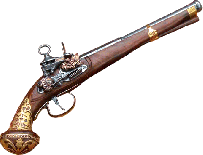 In 1608, a Frenchman from Normandy, one Marin le Bourgeoys, was appointed to the French court. He made the first true flintlock for King Louis XIII shortly after his accession to the throne in 1610. This was not an idea that sprang full-blown from his mind, but the result of putting together the pieces of a puzzle which already existed. The development of firearms had proceeded from matchlock to wheel-lock to snaphaunce and miquelet in the previous two or three centuries, and each type had been an improvement, contributing some design features which were useful. It remained for Monsieur le Bourgeoys to fit these various features together to create the flintlock. The new system quickly became popular, and was known and used in various forms throughout Europe by 1630. | Henry fires a flintlock in celebration of his illegitimate son, Henry Fitzroy's birth. (This type of gun would not be invented till a century later) |
Bows & Arrows
| Historical | Series |
| Long Bow: This is a bow that is roughly equal in height to the person who uses it.When the longbow was introduced to warfare it revolutionized how battles were fought. Archers could stay behind the front line and loose deadly barrages of arrows at leisure. Shortbows and crossbows were no match in either distance or accuracy. | |
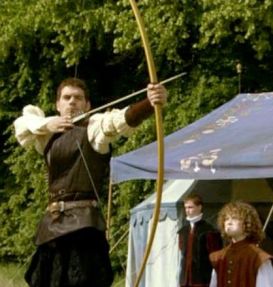 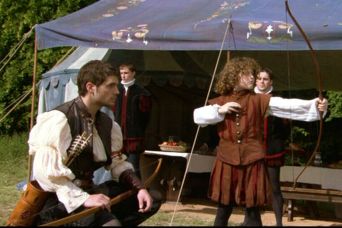 Charles Brandon, 1st Duke of Suffolk shows his son how to pull a bow | |
Swords, Lances , Blades & Axes
| Historical | Series |
Longsword: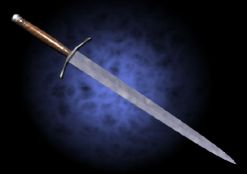 Beginning around 1350 the use of very long swords began in earnest. These swords were designed to be used with both hands on the elongated grip or with one hand on the grip and the other on a covered center part of the blade designed for leverage. Tactics included using an overhead plunging attack upon the heaviest plated armor. Beginning around 1350 the use of very long swords began in earnest. These swords were designed to be used with both hands on the elongated grip or with one hand on the grip and the other on a covered center part of the blade designed for leverage. Tactics included using an overhead plunging attack upon the heaviest plated armor.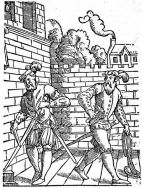 The use of these swords, along with the evolutions taking place in firearms development and armor piercing arrows signaled the demise of the mounted armored knight on the battlefield. Use of these swords lasted from roughly 1350 to 1550, declined in the late 16th century, and they were obsolete by the early 17th century. The use of these swords, along with the evolutions taking place in firearms development and armor piercing arrows signaled the demise of the mounted armored knight on the battlefield. Use of these swords lasted from roughly 1350 to 1550, declined in the late 16th century, and they were obsolete by the early 17th century. | |
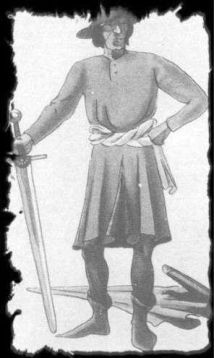 This picture is a French executioner. A typical sword of execution would have had a two inch (5 cm) wide blade which was blunt ended and measured about 40 inches (100 cm) in length. One example below from Germany bears an inscription which translates: "Whenever I raise my sword I wish the sinner everlasting life." | 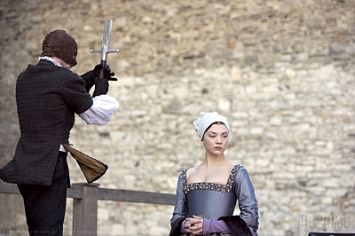 The Frenchman who was brought specifically for the The Frenchman who was brought specifically for thejob of Anne's Execution was called Jean Rombaud in the series and there is a strong possibility that may have been his name as he was named on the French Rolls of 1530 as such. It is recorded that she did look back several times but she was blindfolded in reality. |
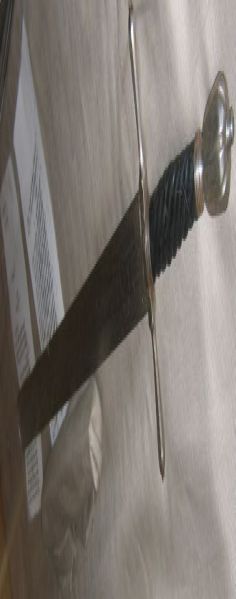 A typical Sword of Execution German - 17th Century | 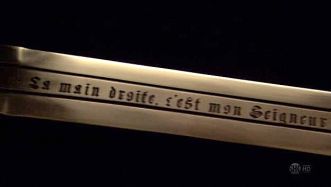 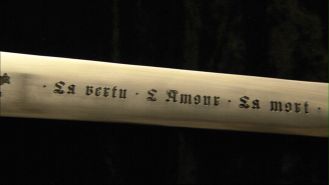 The words on the sword read: "La main droite, c'est mon Seigneur. La vertu, L'amour, La mort." "The right hand, this is my Lord. Virtue, Love, Death." 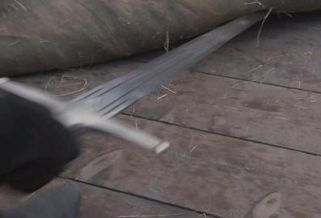 |
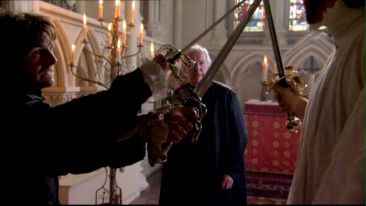 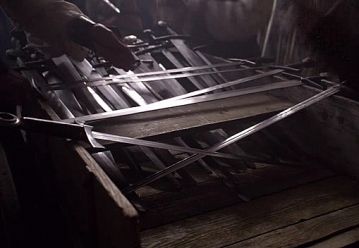 | |
| | |
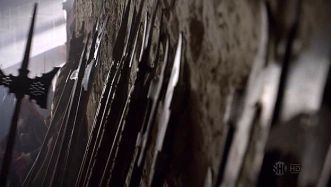 | |
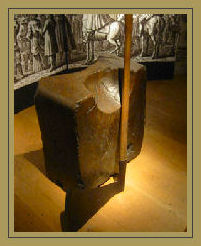 Block and Axe at the Tower of London | 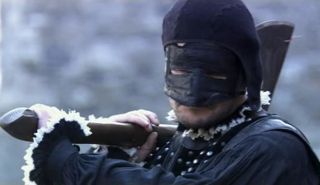 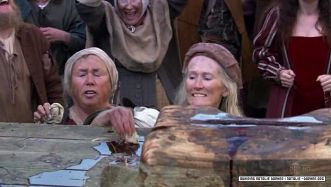 |
Horses
| Historical | Series |
| <embed height="350" src="http://widget.wetpaintserv.us/wiki/thetudorswiki/page/The+Tudors+Armoury/widget/youtubevideo/50bec91bcb74517853b774affca101604410b3c8" type="application/x-shockwave-flash" width="425" wmode="transparent"/> |
| Historical | Series |
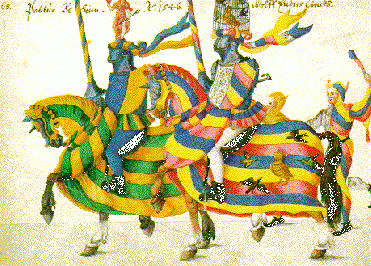 The jousting that was played in Tudor times, was most likely to have been the INDIVIDUAL JOUST which took effect after 1420 and involved an encounter with lances between two knights. The rules were simple. If a combatant struck either rider or horse he was disqualified. A clean hit to the center or "boss" of the shield shattering the lance, or unseating the opponent scored points. | | |
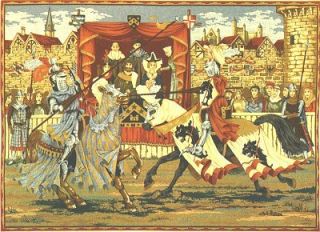 In later times the third type of Joust was introduced, this was known as The PRACTICE TOURNAMENT and was less brutal than the two before its time. This type of joust involved very little ceremony and few rules of which Henry VIII would not have been fond of as he enjoyed a grand ceremony for his jousts and made sure rules were in play. In later times the third type of Joust was introduced, this was known as The PRACTICE TOURNAMENT and was less brutal than the two before its time. This type of joust involved very little ceremony and few rules of which Henry VIII would not have been fond of as he enjoyed a grand ceremony for his jousts and made sure rules were in play. | ||
| Jousts were big events. They were often held on special occasions. Many thousands of people watched, not just nobles. Anyone could get in for about 12 pence. There might also be plays and other entertainment put on at the same time. Many knights dressed up as heroes from history. When Henry married Katherine of Aragon in 1509, she played the role of a Greek goddess and the knights fought a joust for her. | ||
| This is an earlier depiction of the aftermath of a thirteenth century joust, known as the TOURNEY PROPER This form was the most brutal and costly in lives. All participants, upon hearing the charge, promptly melee' crashed onto the tournament field and proceeded to unhorse all others by any method at hand until a winner was determined. [source: <a class="external" href="http://www.squidoo.com/sport-of-jousting" rel="nofollow" target="_blank">Squidoo</a>] | William Compton jokes 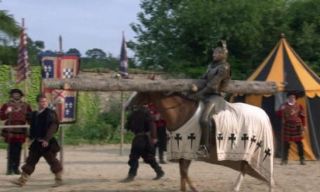 | |
Sources:
|

